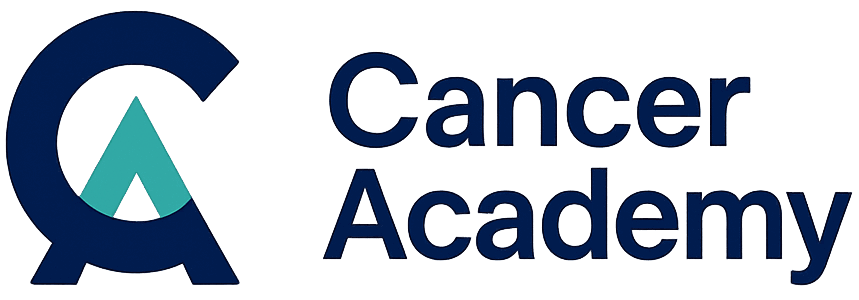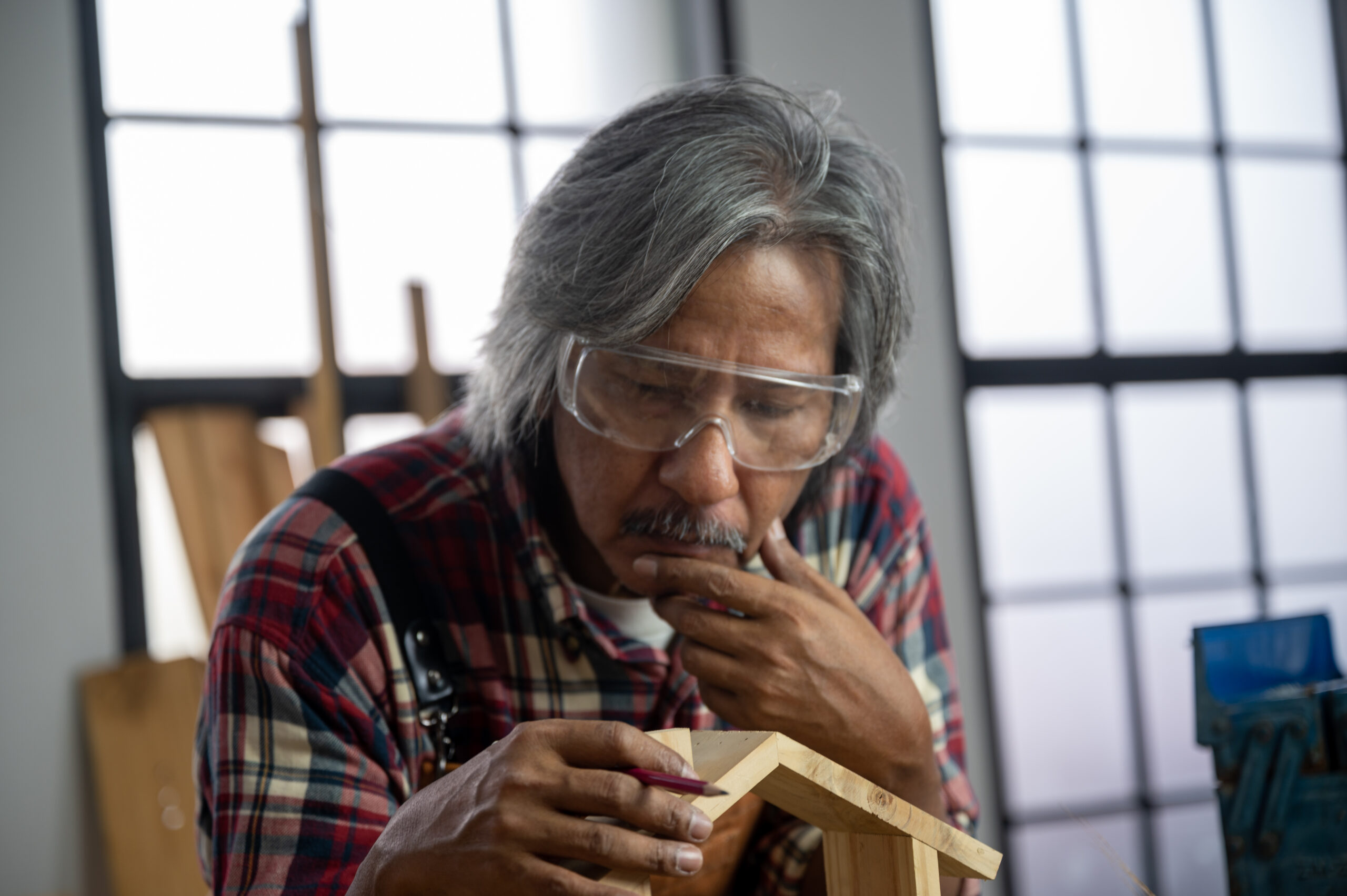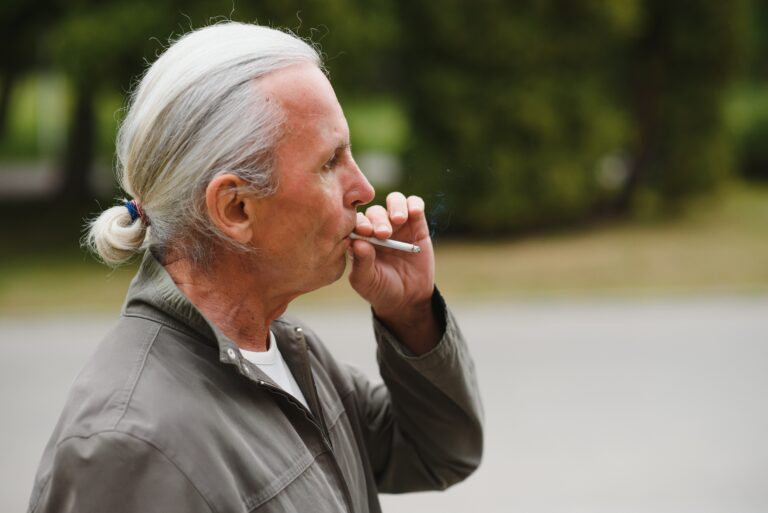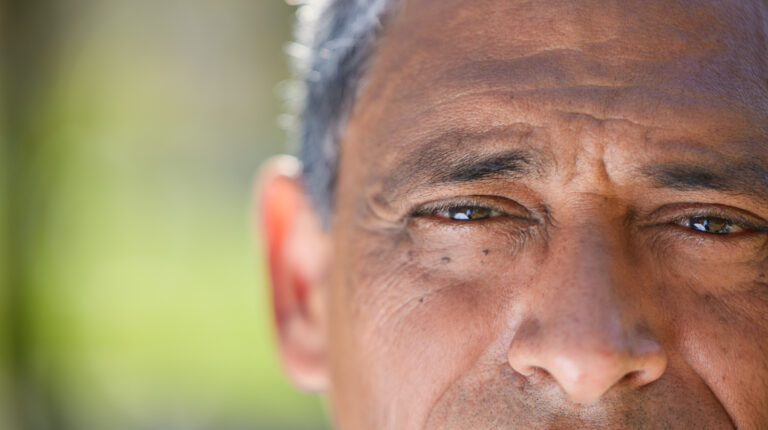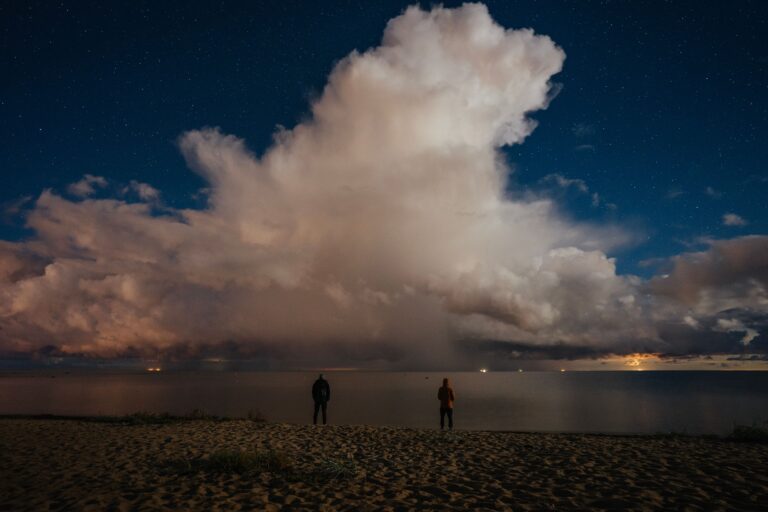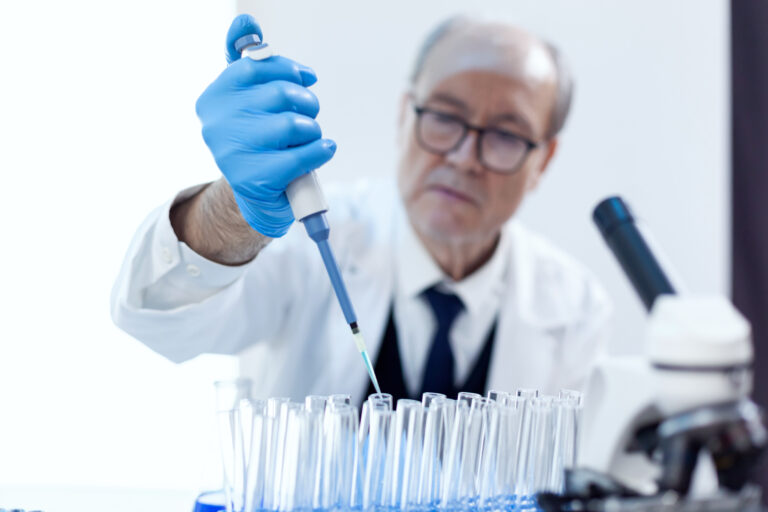Cancer Disparities Affecting American Indian and Alaska Native People
by Darryl Mitteldorf, LCSW
Cancer affects every community, but it does not affect all groups equally. American Indian and Alaska Native (AIAN) people often face higher risks and worse outcomes from cancer than other groups ascopost.com. Research shows that AIAN communities are among the most underserved in the United States and are disproportionately affected by cancer.
In fact, Native American and Alaska Native people have a cancer death rate about 18% higher than White people.
This means that many Native families lose loved ones to cancer more often. These differences are called cancer disparities. In this post, we will explore common types of cancer among AIAN populations, why these disparities exist, the barriers to health care, and the policy issues that affect cancer prevention, diagnosis, and treatment for AIAN people. The goal is to understand the problem and discuss ways to improve the health of Native communities.
Common Types of Cancer Among AIAN People
AIAN people can get any type of cancer, but some types are more common in these communities. The rates of getting certain cancers (and dying from them) can vary by region and tribe cdc.gov. Here are some of the most common and concerning cancers among AIAN populations:
- Lung Cancer: Lung cancer is one of the most common cancers for AIAN people. In five out of six regions served by the Indian Health Service, lung cancer is the number one cancer among AIAN populations. (The only exception is the Southwest region, where lung cancer ranks a bit lower.) Lung cancer is also the leading cause of cancer death for both Native men and womenjournal.binayfoundation.org. Cigarette smoking is a major cause of lung cancer, and smoking rates have been high in many AIAN communities, contributing to this problemcdc.govcdc.gov.
- Colorectal (Colon) Cancer: Colon and rectal cancer is very common among AIAN people. In some areas, it is the most common cancer seencdc.gov. Both AIAN men and women have higher rates of colorectal cancer than non-Hispanic White people in almost all parts of the countrycdc.gov. This cancer can sometimes be prevented or caught early with screening tests (like colonoscopies or stool tests), but many AIAN individuals are not getting these screenings as often as they should.
- Liver Cancer: Liver cancer rates are notably higher in AIAN populations. American Indian and Alaska Native men are more than twice as likely to get liver cancer as White men, and AIAN women have about 2.7 times the rate of White womenminorityhealth.hhs.govminorityhealth.hhs.gov. In all regions of the U.S., AIAN people have higher rates of liver cancer than non-Hispanic White peoplecdc.gov. One reason is that risk factors for liver cancer—such as hepatitis B and C infections and heavy alcohol use—are more common in some Native communities. For example, AIAN people are nearly three times more likely to die from viral hepatitis infections than White peopleminorityhealth.hhs.gov, indicating a higher burden of diseases that can lead to liver cancer.
- Kidney Cancer: Kidney cancer is also more frequent among AIAN people. The incidence of kidney cancer in AIAN men is about 1.7 times higher than in White menminorityhealth.hhs.gov, and a similar pattern is seen in womenminorityhealth.hhs.gov. Risk factors like obesity and high blood pressure can contribute to kidney cancer. AIAN communities have higher rates of obesity than White communitiescdc.govcdc.gov, which may partly explain the higher kidney cancer rates.
- Stomach Cancer: Stomach cancer is not very common in the general U.S. population, but it is a concern for AIAN people in certain regions. For instance, stomach cancer is the fourth most common cancer among Alaska Native peoplecdc.gov. In contrast, in the Southwest AIAN region, it ranks sixth, and in many other regions it does not even make the top tencdc.gov. Overall, AIAN individuals are almost twice as likely to get stomach cancer as non-Hispanic Whitesminorityhealth.hhs.govminorityhealth.hhs.gov. Possible reasons include higher rates of infection with H. pylori (a bacteria that can cause stomach ulcers and cancer) and dietary factors.
- Cervical Cancer: American Indian and Alaska Native women have higher rates of cervical cancer than non-Hispanic White women in almost every region of the countrycdc.gov. Cervical cancer is mainly caused by the human papillomavirus (HPV). It can often be prevented with HPV vaccines and regular Pap smear screening tests. Unfortunately, many AIAN women do not get screened or vaccinated at the same rates as White women, leading to more cases being caught at a later stage. The good news is that cervical cancer is very treatable when found early, so increasing access to screenings and HPV vaccines can make a big difference.
- Breast and Prostate Cancer: Breast cancer (in women) and prostate cancer (in men) are two of the most common cancers in the United States for all races. Among AIAN populations, the incidence (how often it occurs) of breast and prostate cancers is actually a bit lower than in White populationsascopost.com. However, what is worrying is that AIAN people often have higher death rates from these cancers despite the lower incidenceascopost.com. For example, Alaska Native women have a breast cancer death rate 8% higher than White women, even though they get breast cancer less oftenascopost.com. This suggests that AIAN patients may be diagnosed later or have less access to effective treatment (more on that later). Similarly, prostate cancer is less common in AIAN men than White men, but Native men who do get prostate cancer are more likely to die from itascopost.com. This indicates a disparity in outcomes for these common cancers.
In summary, AIAN communities face a unique cancer profile. They have much higher rates of certain cancers like lung, colorectal, liver, kidney, stomach, and cervical cancers compared to White Americans ascopost.com. For other cancers like breast and prostate, they might have fewer cases, but often worse outcomes. These patterns show that simply looking at overall cancer rates can hide important differences. Understanding which cancers are hitting Native communities the hardest is the first step in addressing these disparities.
Causes of Cancer Disparities in AIAN Communities
There are many reasons why AIAN people experience higher cancer rates and worse outcomes. These causes are a mix of health behaviors, environmental factors, and social issues. Below are some of the key factors:
- Higher Exposure to Risk Factors: Many AIAN communities have higher levels of certain cancer risk behaviors. For example, cigarette smoking is more common among AIAN adults than among White adultscdc.govcdc.gov. Smoking causes lung cancer and increases the risk of many other cancers (such as throat, pancreas, kidney, bladder, and colon cancer). This helps explain why lung cancer rates are high in Native populations. Obesity is another risk factor: AIAN adults are more likely to be obese than White adultscdc.govcdc.gov. Obesity can raise the risk of cancers like colon, breast (after menopause), uterine, kidney, and liver cancer. Other lifestyle factors, such as physical inactivity and heavy alcohol use, also tend to be more common in some Native communities. Lack of exercise and unhealthy diets (often due to limited access to fresh, healthy foods) can increase cancer risk over time. Heavy drinking of alcohol can lead to liver cancer and other health problems. These risk factors do not mean every AIAN person smokes or is obese—habits vary by community and individual. However, on average, the greater burden of these risks in many AIAN populations leads to more cancer casespmc.ncbi.nlm.nih.gov. Reducing these risk factors (for example, by quitting smoking, cutting down on alcohol, and promoting healthy foods and exercise) is a crucial step in cancer prevention.
- Infections That Cause Cancer: Some cancers are linked to infections. AIAN communities have faced higher rates of certain infections that can lead to cancer. We mentioned that hepatitis B and C viruses can cause liver cancer. Unfortunately, American Indians and Alaska Natives have higher rates of death from hepatitis, showing these infections are more common or not treated in timeminorityhealth.hhs.gov. This leads to more liver cancer. Another example is human papillomavirus (HPV), which causes cervical cancer (and some throat cancers). If AIAN women have lower HPV vaccination rates or less access to Pap tests, they remain at higher risk for cervical cancer. Additionally, some Alaska Native communities historically had very high rates of H. pylori infection in the stomach, which can cause stomach cancer if not treated. Public health efforts, like vaccination programs (for hepatitis and HPV) and infection treatment (for hepatitis and H. pylori), are important to reduce these infection-related cancers.
- Lower Cancer Screening and Early Detection: A big reason for worse cancer outcomes in AIAN populations is that cancers are often found at a later stage. Preventive screenings save lives by catching cancer early (when treatment works best) or even preventing cancer in the first place. However, AIAN people are generally less likely to be up-to-date on recommended cancer screenings than White peoplecdc.gov. This includes tests like mammograms (for breast cancer), Pap smears (for cervical cancer), colonoscopies or stool tests (for colorectal cancer), and low-dose CT scans (for lung cancer in heavy smokers). There are many reasons for lower screening rates – some are personal (fear or lack of awareness), and some are due to access issues (discussed in the next section on barriers). When people don’t get screened, cancers can grow unchecked until they cause symptoms. By that time, the disease might be more advanced and harder to treat. For instance, colon cancer can often be prevented by removing precancerous polyps during a colonoscopy. If someone never has that screening, the polyp might turn into cancer and only be detected when it’s quite advanced. Studies have found that AIAN patients are less likely to receive cancer screening and timely follow-up care compared to White patientspmc.ncbi.nlm.nih.gov. Improving access to screening and educating communities about its importance can help find cancers earlier and save lives.
- Socioeconomic Factors and Inequities: Many disparities trace back to social and economic inequalities. AIAN people have faced long-standing systemic inequities that affect health. Many live in poverty or have lower incomes on averagecdc.gov. In 2019, the median household income for AIAN families was about $49,900, much lower than the $71,700 for White familiescdc.gov. Higher poverty can lead to crowded or substandard housing, higher stress, and less access to healthy food options. It can also make it harder to afford medications or healthy activities. Educational gaps also play a role: about 84% of AIAN adults have at least a high school diploma, compared to 93% of White adultscdc.gov. Lower education can limit job opportunities and can also affect a person’s understanding of health information or navigation of the healthcare system. Furthermore, some Native communities live in areas with environmental hazards (like old mines, contaminated water, or high pollution) which can increase cancer risk. All these socioeconomic factors contribute to higher cancer incidence and worse outcomes. They are not biological causes, but they create conditions that make cancer more likely and harder to fight.
- Differences in Cancer Treatment and Follow-Up: Even after a cancer is diagnosed, AIAN patients often face challenges that can affect treatment outcomes. Research confirms that AIAN cancer patients are less likely to receive the recommended treatments for their cancer compared to White patientspmc.ncbi.nlm.nih.gov. For example, they may be less likely to get surgery to remove a tumor, or to receive chemotherapy or radiation therapy when it’s indicatedpmc.ncbi.nlm.nih.gov. There are multiple reasons for this gap. Some patients have to travel very far or navigate complex referral processes to see oncology specialists (cancer doctors). Some might delay or forgo treatment due to cost, fear, or lack of trust in the medical system. There may also be communication barriers if healthcare providers are not culturally sensitive or if there is no patient navigator to help guide the patient. Additionally, AIAN patients have been found to use hospice care and palliative care less oftenpmc.ncbi.nlm.nih.gov, possibly due to lack of access or differences in cultural preferences around end-of-life care. The bottom line is that even with equal treatment, outcomes can vary, but unequal access to proper treatment makes the outcome disparities even larger. Ensuring that Native patients can get the full range of standard cancer care is essential to improving survival rates.
In short, cancer disparities in AIAN communities are caused by a mix of health behaviors (like smoking and diet), environmental and infection exposures, and social barriers that lead to later diagnosis and less treatment. It’s not due to any inherent weakness or difference in the people themselves; it’s about circumstances and inequities. Understanding these causes helps in planning solutions. For instance, knowing that smoking is high suggests focusing on tobacco cessation programs in Native communities. Knowing that screening is low means we should find ways to make screening more accessible and culturally acceptable. Each cause points to a chance to make things better.
Barriers to Healthcare Access
A major reason cancer outcomes are worse for AIAN people is the difficulty many face in accessing healthcare. Even if someone knows they should see a doctor or get a screening test, they might not be able to. Here are some common barriers to healthcare access for American Indian and Alaska Native communities:
- Lack of Health Insurance: AIAN people are more likely to be uninsured than other Americans. Nearly 1 in 5 AIAN individuals has no health insurance, compared to about 1 in 17 White individualscensus.gov. Not having insurance can make healthcare unaffordable. People without insurance are less likely to have regular check-ups or cancer screenings because of the cost. Even when care is available through the Indian Health Service or tribal clinics, those facilities might not cover everything. The result is that many AIAN adults delay care or skip preventative services, which can lead to cancers being found at a later stage.
- Lower Income and Poverty: As mentioned earlier, many AIAN families have low incomescdc.gov. Living in poverty makes it hard to pay for healthcare expenses like co-pays, medicines, or travel to a clinic. It can also force tough choices: a person might skip a doctor’s visit because they can’t miss work or can’t afford gas for the long drive. When basic needs like food and housing are hard to meet, health care can take a back seat. Poverty is a barrier that underlies many other problems, from nutrition to transportation.
- Remote Locations and Long Distances to Care: Many American Indian reservations and Alaska Native villages are in rural, remote areas. Hospitals and specialty clinics (like cancer centers) are often far away in cities. AIAN people who live in these areas might have to travel a very long distance to get specialized cancer treatment or even routine screeningscdc.gov. For example, a study in Utah found that Native American cancer patients had to travel a median distance of about 190 miles to reach a major cancer center, whereas White patients traveled about 22 milesjournal.binayfoundation.org. In the broader U.S., the median distance from Native reservation areas to the nearest top cancer center was around 186 milesjournal.binayfoundation.org. This is a huge barrier. Traveling such distances means taking time off work, finding childcare, and paying for gas, lodging, or airfare. In winter, travel can be dangerous or impossible for some areas. Limited access to public transportation in rural regions adds to the problemcdc.gov. Some communities have started patient van services or telehealth options to help with this, but distance remains a serious challenge for many.
- Shortage of Healthcare Facilities and Providers: On reservations or in Native communities, there may be only a small clinic with few staff. Specialized services like mammograms, colonoscopies, or oncology (cancer) care often aren’t available on-site. The Indian Health Service (IHS) clinics may stabilize patients and then refer them to outside hospitals for advanced care. However, if IHS facilities lack certain cancer screening equipment (like colonoscopy services)cancer.org, patients must go elsewhere. There is also a nationwide shortage of doctors and nurses in IHS and tribal health facilities. Fewer providers means longer wait times and less preventive care. In some cases, AIAN patients might have to wait months for an appointment with a specialist, during which time a cancer could progress. This shortage is partly due to underfunding (discussed in the policy section) and the difficulty of recruiting healthcare workers to very rural or remote areas.
- Cultural and Language Barriers: Health care works best when patients and providers understand and trust each other. For many AIAN individuals, experiences with the healthcare system have not always been positive. Cultural differences and a historical mistrust of healthcare systems can lead to lower participation in preventive care and screeningsamericanindiancancer.org. Some Native patients may feel that medical providers do not respect or understand their traditional beliefs and values. This can make them hesitant to seek care or follow medical advice if it conflicts with cultural practices. Language can be a barrier as well, especially for elders who may speak their Native language more comfortably than English. If translation or interpretation isn’t available, communication suffers. Also, the lack of AIAN representation among healthcare providers can make clinics feel unwelcoming or foreign to Native patients. When doctors or nurses are not trained in cultural sensitivity, they might unintentionally disrespect patients’ beliefs or not recognize unique needs. All of this can erode trust. For instance, if someone from a Native community has seen family members mistreated or ignored by a hospital in the past, they might avoid going to the doctor until their illness is very advanced. Building trust through culturally competent care is essential. Efforts like having Native patient navigators, community health representatives, or culturally tailored health education can help bridge this gapamericanindiancancer.org.
- Administrative and Financial Barriers: Even when AIAN patients manage to see a doctor, they can face red tape and financial hurdles. For example, if a person is referred from an IHS clinic to an outside cancer specialist, the cost might be covered by a program called Contract Health Services (now often called Purchased/Referred Care). But this program has limited funds. It sometimes only pays for the “highest priority” cases, and once funds run out, patients might be on their own. If a referral is not deemed priority or if paperwork is delayed, patients could miss timely treatment. Additionally, not all AIAN individuals are eligible for IHS services (you generally need to be a member of a federally recognized tribe and live in the IHS service area). Urban Native Americans who live in cities might rely on Urban Indian Health Programs, which have even more limited resources. If they try to use regular healthcare, they might face high costs if uninsured, or providers who are not familiar with Native cultures. These systemic issues can discourage people from pursuing follow-up care. Imagine being diagnosed with cancer and then being told you have to find your own specialist and figure out payment—that would be overwhelming for anyone.
These barriers often stack on top of each other. For example, a person might be uninsured and live 200 miles from the nearest oncologist and feel unsure about the medical system due to cultural differences. Overcoming these hurdles is not easy. It requires community and government efforts to bring care closer to people, reduce costs, and build trust. Some practical steps that have helped include mobile screening clinics (that travel to remote areas), patient navigator programs that help Native patients coordinate care, and partnerships between tribal health services and major cancer centers to provide telemedicine (remote consultations). On an individual level, families can support each other by organizing trips to the doctor together and sharing knowledge about programs that provide free or low-cost screenings. Community health fairs and tribal events that offer screening (like mammogram vans at powwows) have also been successful in some areas. By identifying and addressing these barriers, we can improve access to cancer prevention and care for AIAN people.
Policy Issues Affecting Cancer Prevention, Diagnosis, and Treatment
Health disparities do not happen in a vacuum—they are linked to policy decisions and the way healthcare systems are structured. For AIAN communities, there are specific policy issues that impact cancer prevention, diagnosis, and treatment:
- The Indian Health Service (IHS) and Underfunding: Unlike other minority groups, AIAN people have a unique legal relationship with the U.S. government. Through treaties and laws, the federal government has an obligation to provide healthcare to American Indian and Alaska Native peoplepubmed.ncbi.nlm.nih.gov. The IHS is the agency tasked with this job. However, the IHS has been severely underfunded for many yearspubmed.ncbi.nlm.nih.gov. In simple terms, this means the IHS does not get enough money to meet the healthcare needs of the population it serves. To put it in perspective, one analysis noted that the IHS is providing care for a population with high health needs, but with only about 38% of the funding per person that the average American’s healthcare receivespmc.ncbi.nlm.nih.gov. Another source compared per-person spending: roughly $4,000 per year is spent on an IHS user versus over $10,000 on the average American’s healthcaremercatus.orgpmc.ncbi.nlm.nih.gov. This funding gap is huge. It results in fewer clinics, fewer doctors and nurses, outdated equipment, and shorter clinic hours. Many IHS facilities do not have cancer specialists or advanced treatment options. They often have to refer patients out to other hospitals for cancer care, as mentioned before. Underfunding also means preventive programs (like community education on diet, tobacco, or providing screenings) may be limited. In terms of policy, increasing funding for IHS is often highlighted as necessary to improve health outcomespmc.ncbi.nlm.nih.gov. While funding has increased somewhat in recent years, it still lags far behind the need.
- Coordination Between IHS and Other Healthcare Services: Navigating cancer care often requires moving between different health systems. An AIAN patient might start at an IHS clinic, get referred to a non-IHS hospital for surgery, and then need chemotherapy at a cancer center. If these systems don’t work smoothly together, patients can fall through the cracks. Currently, coordination between IHS and programs like Medicaid or Medicare is not as good as it should bepmc.ncbi.nlm.nih.gov. For instance, if an AIAN patient is eligible for Medicaid (a public insurance for low-income people), ideally Medicaid should cover what IHS cannot. But confusion over paperwork or billing can cause delays. Some policy experts suggest that better integration is needed so that AIAN patients experience a “continuum of care” without gaps. Additionally, many AIAN people rely on Medicaid—so Medicaid expansion in states (a provision of the Affordable Care Act) has been important for Native communities. In states that expanded Medicaid, more AIAN adults gained insurance coverage, which can lead to better access to cancer treatment. In states that did not expand Medicaid, many low-income AIAN adults remain uninsured and dependent solely on IHS. State and federal policies on insurance thus directly affect Native patients. Ensuring that all AIAN individuals have some form of coverage (whether through IHS, Medicaid, or private insurance) is key to improving cancer outcomes.
- Cancer Screening and Prevention Programs: Government policies and funding also determine what kinds of prevention programs are available. One successful program is the National Breast and Cervical Cancer Early Detection Program (NBCCEDP), which provides free or low-cost mammograms and Pap tests to uninsured women, including AIAN women. Policies that support such programs (and expand them to cover things like lung and colon cancer screening) can help catch cancers early in AIAN populations. There are also tribal and urban Indian health programs that receive grants for cancer prevention initiatives. Some tribes have passed policies to restrict commercial tobacco use (for example, banning smoking in tribal buildings or at casinos) to reduce secondhand smoke and encourage quitting. Public health policies like taxes on sugary drinks or improving food assistance programs can help reduce obesity and diabetes, which in turn may lower cancer risk. A challenge is that tribes are sovereign nations, so they can create their own health policies, but resources to implement programs can be limited. Collaboration between federal, state, and tribal governments is needed. Policy changes such as providing funding for mobile clinics, supporting telehealth infrastructure in rural areas, and training community health workers can all boost prevention and early detection efforts in Native communities.
- Improving Data and Research Inclusion: Good policy relies on good data. In the past, a lot of health data did not properly identify AIAN individuals (for example, misclassifying them as another race)cdc.gov. This led to underestimation of cancer rates and less attention to the problem. Policies that support better race identification in health records and cancer registries have been put in place. There is a collaboration between cancer registries and the IHS to correct race misclassificationcdc.gov. This is important because if data show a certain tribe or region has very high rates of a particular cancer, resources can be directed there. Also, AIAN people have often been underrepresented in clinical trials and research. Encouraging inclusion of Native populations in cancer research (in a respectful and ethical way) is a policy issue related to achieving equity. Without research that includes AIAN genetics, responses, and cultural factors, treatments and guidelines may not be fully optimized for them.
- Culturally Competent Care and Trust-Building: While not a “policy” in the legislative sense, a systemic approach is needed to ensure healthcare for AIAN people is delivered in a culturally competent manner. Hospitals and cancer centers that serve many Native patients might implement policies like hiring Native staff or providing cultural humility training to their providers. Some cancer centers have agreements with tribes to consult on how to make their services more accessible. For example, having a patient navigator who speaks the local Native language or is from the community can be immensely helpful. On the federal level, supporting the education of more AIAN healthcare professionals (through scholarship programs, for instance) is a policy strategy to increase representation. When Native patients see Native doctors and nurses, it can build trust and improve communication. Furthermore, policies that protect patients from discrimination and ensure language access (like providing interpreters) also affect the cancer care experience. AIAN individuals, like all patients, deserve to be treated with respect and understanding. Reducing the fear or skepticism toward the medical system will likely increase use of preventive services and adherence to treatments.
- Need for Continued Advocacy and Funding: Experts have pointed out that overcoming Native cancer disparities will require concerted policy action and funding supportpmc.ncbi.nlm.nih.gov. This includes sustained funding for IHS and tribal health programs, grants for community-driven cancer control projects, and possibly new models of healthcare delivery. For instance, some have proposed cancer centers in partnership with tribes, or a greater role for urban Indian health clinics in providing cancer screening. Policy changes often take time and political will. Tribal leaders and Native advocacy groups frequently lobby Congress for higher IHS budgets and inclusion in public health initiatives. The general public can also support these efforts by recognizing the problem and encouraging lawmakers to act. Remember that improving cancer care for AIAN people is not just a Native issue—it’s an American issue, fulfilling promises made to Native nations and ensuring everyone has a fair chance at a healthy life.
Practical Steps and Moving Forward: While big policy changes are being worked on, there are practical things that can help now. Communities are developing local solutions, like educational campaigns about screening, youth anti-tobacco programs, and survivorship support groups that blend medical advice with cultural practices. On an individual level, AIAN families can take steps such as: knowing their family health history and sharing it with their doctor, keeping up with cancer screenings recommended for their age group, and adopting healthy lifestyle changes together (for example, making traditional physical activities and traditional healthy foods part of daily life). Seeking support is also important—no one has to face cancer alone. There are organizations specifically for Native cancer patients (like the American Indian Cancer Foundation and local tribal health departments) that offer resources and navigator services.
Lastly, addressing cancer disparities will require partnerships. Healthcare providers, government agencies, tribal authorities, and community members must work together. By combining medical knowledge with cultural wisdom, and by ensuring resources are fairly distributed, we can make progress. It’s not an easy journey, but it is a necessary one. Every step—from a single person quitting smoking, to a tribe opening a new health clinic, to Congress allocating more funds for IHS—brings us closer to a future where American Indian and Alaska Native people no longer carry an unfair burden of cancer. Each of us can play a part, whether it’s through educating ourselves, helping a family member get to a screening, or supporting policies that promote health equity. In doing so, we honor the value of every life and move toward a more just health system for all.
Sources:
- Centers for Disease Control and Prevention. Cancer and American Indian and Alaska Native People – Key points on cancer rates and disparitiescdc.govcdc.gov.
- Office of Minority Health, U.S. Department of Health and Human Services. Cancer and American Indians/Alaska Natives – Comparative cancer statistics for AIAN vs White populationsminorityhealth.hhs.govminorityhealth.hhs.gov.
- Zhao G. et al. (2022). Health-Related Behavioral Risk Factors and Obesity Among AI/ANs – Higher smoking and obesity rates in AIAN adultscdc.govcdc.gov.
- Melkonian SC et al. (2019). Disparities in Cancer Incidence and Trends Among AI/AN, 2010–2015. Cancer Epidemiol Biomarkers Prev – Higher incidence of lung, colorectal, liver, kidney, stomach cancers in AIAN populationspmc.ncbi.nlm.nih.gov.
- Jain D. et al. (2023). Access to NCI-Designated Cancer Centers Among Native American Patients. Intl. Jrnl. of Cancer Care and Delivery – Native patients travel much farther for cancer carejournal.binayfoundation.orgjournal.binayfoundation.org.
- Kaur JS et al. (2022). Cancer Care Access and Outcomes for American Indian Populations. Semin Radiat Oncol – Review showing poorer outcomes and need for funding and policy changespmc.ncbi.nlm.nih.govpmc.ncbi.nlm.nih.gov.
- Warne D. et al. (2012). AI/AN Cancer Policy: Systemic Approaches to Reducing Disparities. J Cancer Educ – Describes treaty rights to healthcare and IHS underfundingpubmed.ncbi.nlm.nih.gov.
- American Indian Cancer Foundation – Frequently Asked Questions – Notes on cultural barriers and mistrust affecting careamericanindiancancer.org.
- U.S. Census Bureau (2022). Health Insurance Coverage by Race and Hispanic Origin: 2021 – Uninsured rates (18.8% for AIAN vs 5.7% for White)census.gov.
- The ASCO Post (2024). Overcoming Disparities in Cancer for Alaska Native Individuals – Interview citing 18% higher cancer mortality for NA/AN vs Whiteascopost.com.
